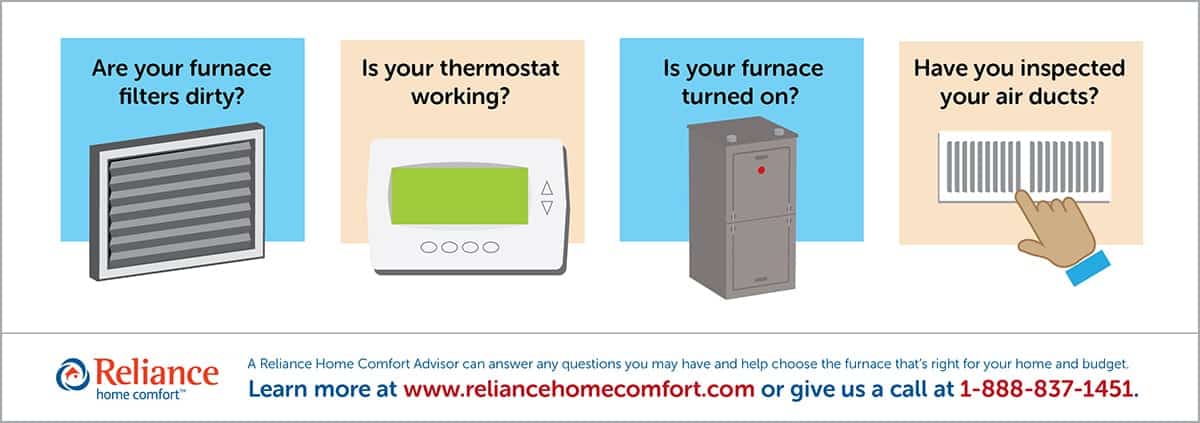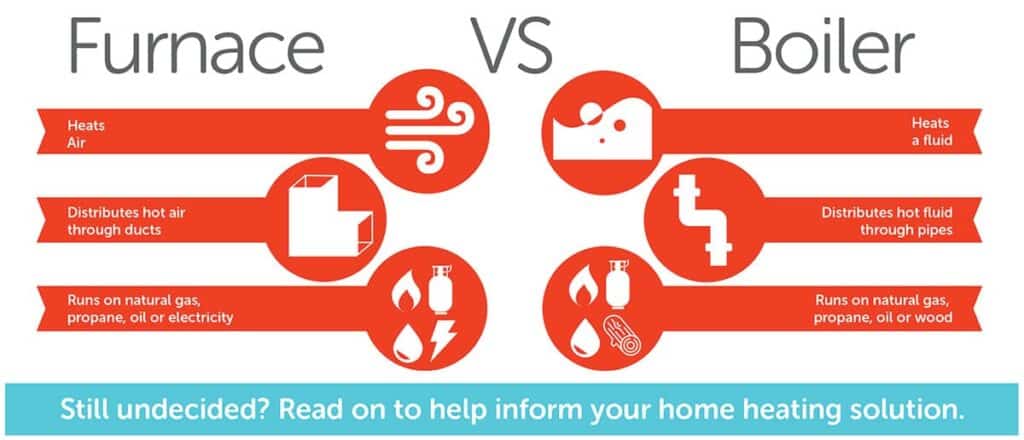You’re wearing your coziest thick socks, your scarf is tightly wrapped around your neck and shoulders, and there’s an unmistakable chill in the air.
Unfortunately, you aren’t outside but standing in your home, shivering because your furnace has stopped working! The question is, what should you do next? The first thing that may come to mind when you have a broken furnace on your hands is to call the professionals in to fix it – and that’s never a bad idea. But did you know that there are a few things you might want to consider before you make that furnace repair call?
Check out our latest Furnace Offers here!
Here are four common issues that can cause your furnace to stop working, and they don’t necessarily require the services of a heating expert.

1. Dirty Furnace Filters
Is your furnace firing up but not blowing heat as hard as usual? Dirty air filters are often the culprit behind an inefficiently performing furnace. That’s because air filters trap dust, dirt and debris like hair, which over time can restrict or block vital airflow, overheating the heat exchanger and preventing your furnace from working as it should.
Filters should be changed every three months or as recommended by your equipment manufacturer manual. To fix the issue, simply purchase a new filter from your local discount or hardware store and follow the instructions in your owner’s manual to make the switch. Watch our video on how to change your furnace filter.
2. Thermostat Issues
It may sound incredibly simple, but the source of many a malfunctioning furnace is, in fact, the thermostat, which is the control centre of your heating system.
To troubleshoot, set your thermostat to heat instead of cool, then set it to 5 degrees above room temperature and see if the furnace comes on.
If it’s not working as it should, the problem could be as straightforward as the thermostat’s batteries. When the batteries die, the display will go blank, and the thermostat will no longer be able to operate your heating and cooling system. An excellent way to avoid this issue is to simply replace the batteries every year.
3. Is the Furnace Turned On?
We hate to ask but could the problem be that your furnace isn’t turned on? It sounds like a no-brainer, but if repairs or maintenance work were recently performed on your furnace and it’s not working for some reason, you may want to check to ensure that it was turned back on. All furnaces have a basic power switch. Simply look for a standard wall switch on or near the furnace and check if it’s in the on or off position.
You may also want to check your circuit breaker or fuse for the furnace, which may have been turned off.
Finally, make sure the front panel covering the blower motor is securely fastened – under it, you’ll find a push-in switch, which needs to be fully depressed for your furnace to turn on.
4. Inspect Air Ducts
Have you noticed cold spots in your home even when hot air is coming out of the air vents? The problem could be the air ducts. Check for handles that protrude from the ducts – these are dampers that control airflow. You’ll want to make sure they’re fully open.
If some entire rooms are still cold, you may have a problem with leaking ducts or incorrectly designed ducts. This is a serious issue that can increase your energy bill. To find blocked or leaky ducts that could be restricting airflow, take a look at any ducts you can access – are there any gaps between sections of ducts or branching out points? You can seal these with special metal duct tape. Call a professional to have ducts cleaned and repaired.
And always make sure your vents aren’t being blocked by furniture or covered by objects in your home, like drapes, plants or wall art.
Schedule an appointment
If you’ve checked all of the above and your furnace still isn’t working, then it’s time to call in the professionals. Repairing a furnace certainly isn’t one of those projects that most homeowners can DIY, so it’s essential that you contact qualified HVAC repair technicians, like our home comfort specialists.
Finally, ask a Reliance® technician about any other factors common to your furnace make and model so you can take action if a problem arises in the future.







